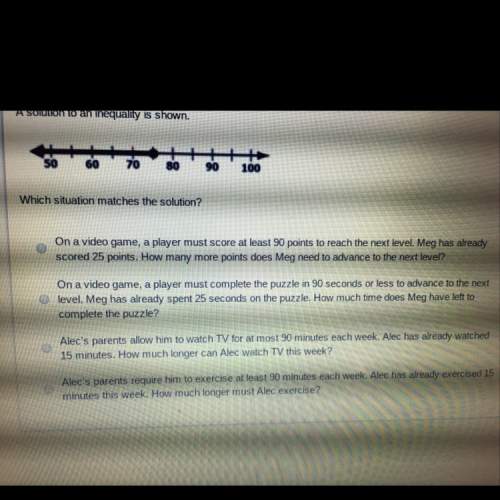
Mathematics, 15.08.2020 02:01 soniah
In your bid to be elected class representative, you have your election committee survey five randomly chosen students in your class and ask them to rank you on a scale of 0-10. Your rankings are 9, 6, 1, 7, 7. (a) Find the sample mean and standard deviation. (Round your answers to two decimal places.) HINT [See Example 1.] sample mean standard deviation (b) Assuming the sample mean and standard deviation are indicative of the class as a whole, in what range does the empirical rule predict that approximately 68% of the class will rank you

Answers: 2
Another question on Mathematics

Mathematics, 21.06.2019 14:30
An an average person has 6×10 by the power of two as many red blood cells as white blood cells a small sample of the blood has 7×10 by the power of three white blood cells about how many red blood cells are in the sample
Answers: 1

Mathematics, 21.06.2019 16:00
Successful implementation of a new system is based on three independent modules. module 1 works properly with probability 0.96. for modules 2 and 3, these probabilities equal 0.95 and 0.90. compute the probability that at least one of these three modules fails to work properly.
Answers: 2

Mathematics, 21.06.2019 21:30
The box plots show the average speeds, in miles per hour, for the race cars in two different races. which correctly describes the consistency of the speeds of the cars in the two races?
Answers: 3

Mathematics, 21.06.2019 21:30
In a test for esp (extrasensory perception), the experimenter looks at cards that are hidden from the subject. each card contains either a star, a circle, a wave, a cross or a square.(five shapes) as the experimenter looks at each of 20 cards in turn, the subject names the shape on the card. when the esp study described above discovers a subject whose performance appears to be better than guessing, the study continues at greater length. the experimenter looks at many cards bearing one of five shapes (star, square, circle, wave, and cross) in an order determined by random numbers. the subject cannot see the experimenter as he looks at each card in turn, in order to avoid any possible nonverbal clues. the answers of a subject who does not have esp should be independent observations, each with probability 1/5 of success. we record 1000 attempts. which of the following assumptions must be met in order to solve this problem? it's reasonable to assume normality 0.8(1000), 0.2(1000)%30 approximately normal 0.8(1000), 0.2(1000)% 10 approximately normal srs it is reasonable to assume the total number of cards is over 10,000 it is reasonable to assume the total number of cards is over 1000
Answers: 1
You know the right answer?
In your bid to be elected class representative, you have your election committee survey five randoml...
Questions

Law, 18.03.2021 01:40




Mathematics, 18.03.2021 01:40

Mathematics, 18.03.2021 01:40

Health, 18.03.2021 01:40


Mathematics, 18.03.2021 01:40



Mathematics, 18.03.2021 01:40

Mathematics, 18.03.2021 01:40


Geography, 18.03.2021 01:40

English, 18.03.2021 01:40

Arts, 18.03.2021 01:40

History, 18.03.2021 01:40

Mathematics, 18.03.2021 01:40

Mathematics, 18.03.2021 01:40

 = ∑x/n
= ∑x/n


